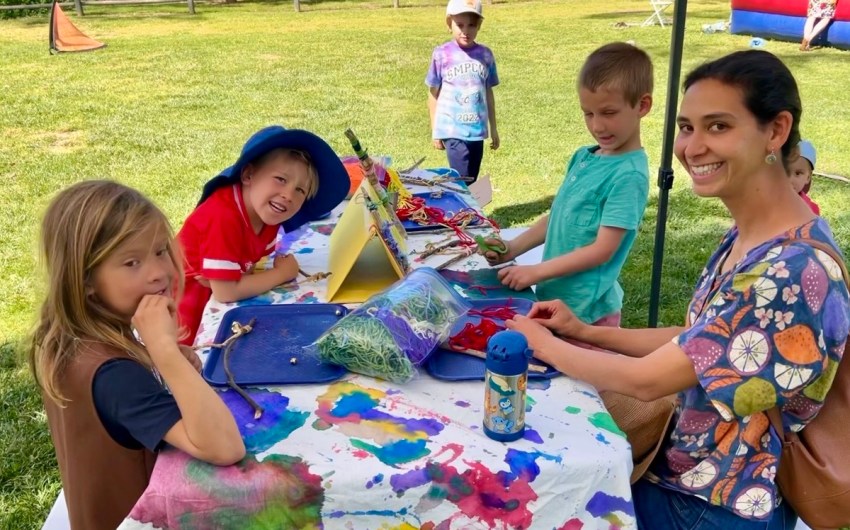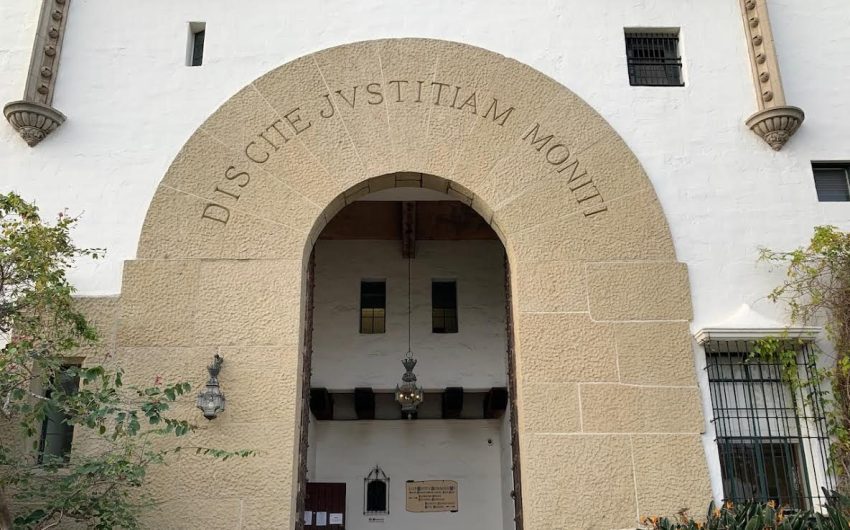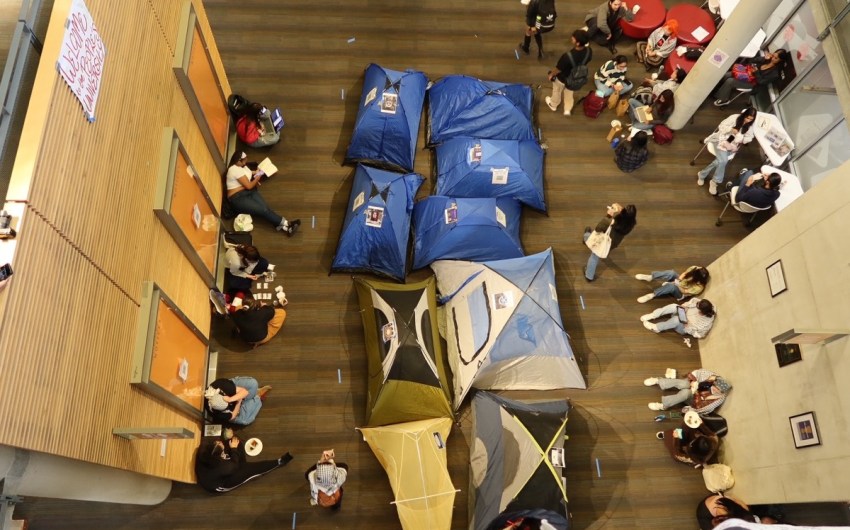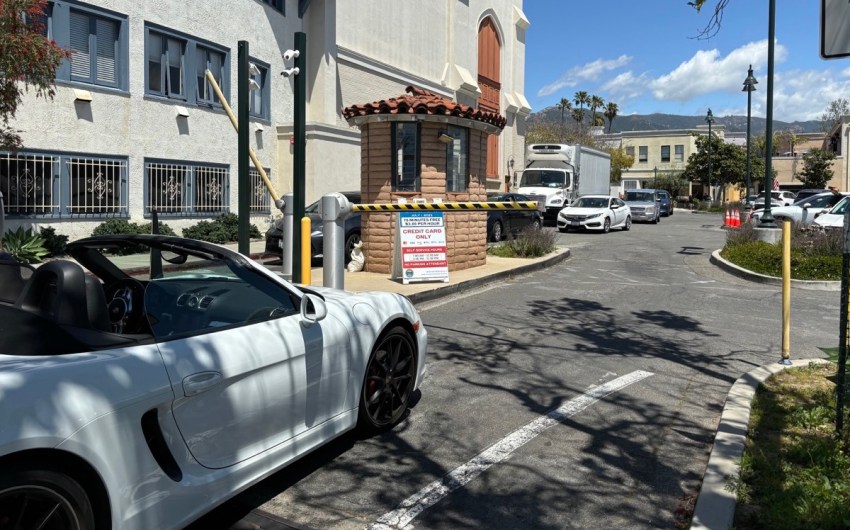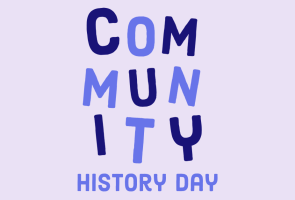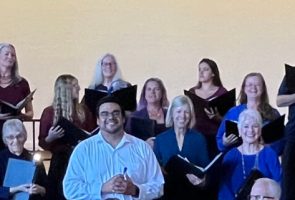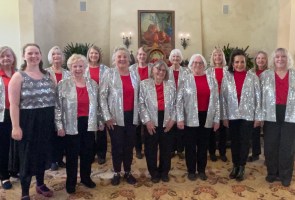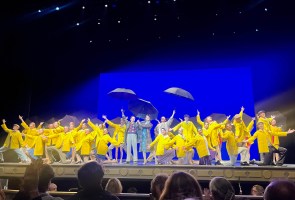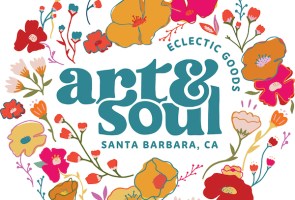The ABCs and 123s of Kindergarten … for Parents
How to Navigate Your Family’s Entrée Into the Santa Barbara School System
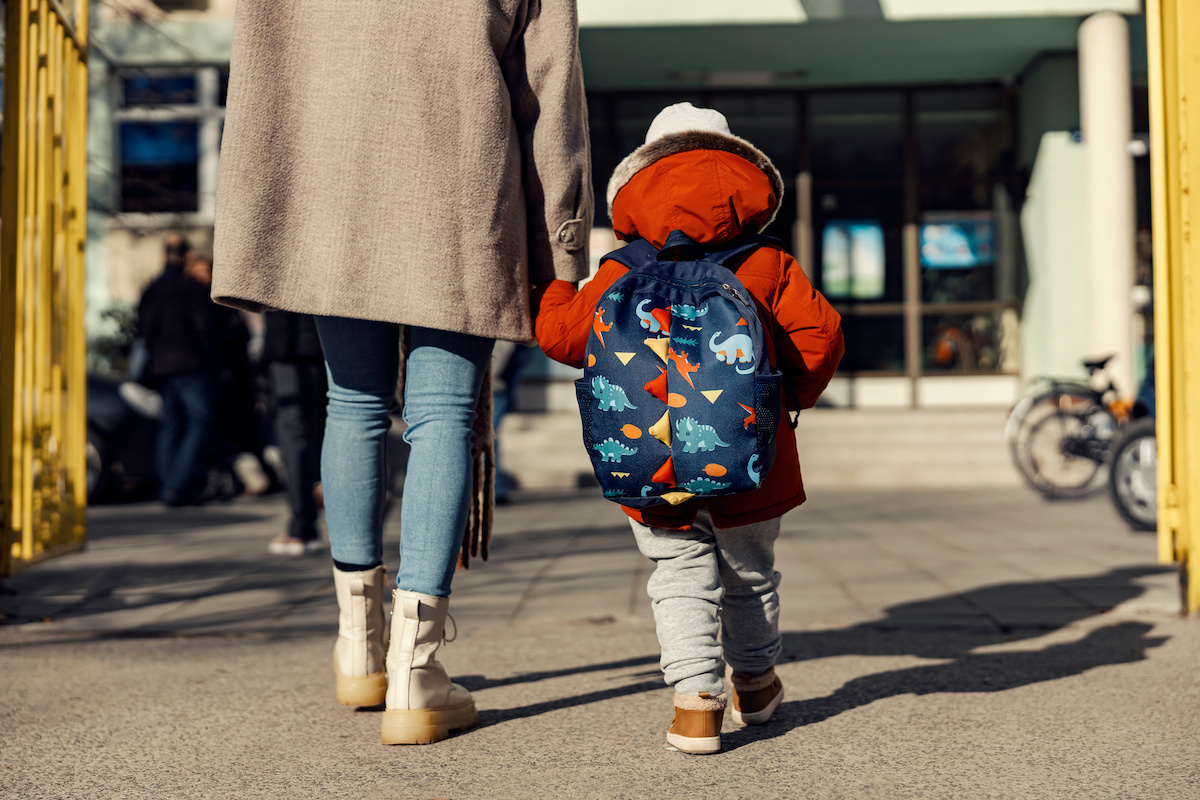
A year ago, I was eight months pregnant with my second child. My first was in Transitional Kindergarten (TK), and “graduation” was looming.
Pregnancy brain and being new to town didn’t exactly help me navigate the intimidating kindergarten enrollment process. I knew we were zoned for La Patera Elementary and needed to register my son for that. Then, I attended “kindergarten night.”
My mind was opened to the options out there. I’d heard great things about La Patera, and being a journalist mom, I couldn’t help but research and discover more places where my son could begin his educational journey. And, news flash: It’s not just about your child. Parents need to like what they’re hearing and seeing for the whole family, since this is a new community you’re joining.
If you’re gearing up for kindergarten this year and have no idea where to begin, here’s your download on the admission process.
School Tours & Open Houses
You have four choices: your public school based on your address, a charter public school, a private school, or homeschool. School tours and open houses happen early in the year, and applications are due in February. Kindergarten starts in August for most schools.
Attending school tours and open houses helped us narrow down our applications to three. Sonia Morosin, M.Ed Kindergarten Teacher and Education Specialist at Santa Barbara Charter School, encourages school tours. This is how you can see the campus and the kids doing their thing on a typical day, get the vibe, and ask questions.
Laguna Blanca’s Director of Admissions Joyce Balak says, “Visiting a school is important; parents shouldn’t rely solely on friends as the right school for one child may not fit another.”
Here are some questions Morosin suggests asking prospective schools: “What specialists do you offer? What is the ratio of adults to children? What is the parent participation like? Do you offer an after-school program? How is my child going to be nurtured or challenged?”
I learned a lot from other parents’ questions, like what school security is like and how the staff handles conflict resolution. Get your Notes app going and write your questions down ahead of time.
What Is the Main Difference Between Public Schools and Public Charter Schools?
Like your zoned public school, public charter schools have free tuition. The main difference is that charters have autonomy because their governing boards are in charge of financial decisions and the curriculum.
Some local charters are Santa Barbara Charter School, Adelante (a bilingual program), Olive Grove, and Peabody. These schools have their own missions. For example, Santa Barbara Charter’s mission is “to cultivate learning in the areas of arts, academics, and relationships.”
“Santa Barbara Charter has a set curriculum for each subject, but we can pull from other curriculums to meet kids’ individual needs,” explains Morosin.
This was one of the main reasons we applied to Santa Barbara Charter. I knew my son was an advanced reader and wanted to make sure he’d be supported in this area. I’ve already witnessed how Morosin works with him to expand his skills while juggling 23 other kinders’ different reading levels.
Is Homeschool for Us?
Homeschools are often run by public charters or private schools. According to Marianne Kruidenier, teacher and enrollment coordinator at Santa Barbara Charter’s HomeBased Partnership, there are various reasons families homeschool, from parents who were homeschooled to short-term homeschooling to spend more time with your kids or remediate on a particular subject. Sometimes, it’s the child who wants to homeschool so they can also focus on another interest, like a sport.
Each homeschool program is different, and contrary to what I’d imagined as a parent sitting at home with their child pulling their hair out to make learning magic happen, there’s loads of support out there.
“Santa Barbara Charter’s HomeBased Partnership was created by local Santa Barbara homeschooling families as a place for their kids to gather, socialize, get academic support, have access to free curriculum, a lending library, special education services, elective classes, and a community of homeschoolers,” explains Kruidenier.
“Our program is small, with 70 or fewer kids in grades TK-8th, and that gives us the margin to really listen to kids, learn from them, and help them succeed. We have drop-off days at our beautiful classroom and large outdoor space four days per week. Our schedule is flexible, and families can approach their homeschooling in their unique ways.”
Screenings & Waitlists
We applied to three public schools and were waitlisted for two of them. We were accepted at La Patera (because that’s our zoned public school), and entered into the lotteries for Santa Barbara Charter and El Camino’s DLI (Dual Language Immersion) program.
I didn’t hear from anyone until May when La Patera requested a screening with my son, a 15-minute meeting where the kindergarten teachers ask incoming students some reading, writing, and math questions.
Some schools do more extensive screening during the application process. According to Joyce Balak, Laguna Blanca’s Director of Admissions, “Laguna’s application process (before students are offered a position) consists of a personal evaluation and playgroup. Students sit for a one-on-one evaluation with a school evaluator during the admission process to gain a sense of a child’s school readiness. In addition, applicants attend a one-hour playgroup, which simulates a kindergarten classroom experience. Children rotate through various centers, so we see their social/emotional readiness.”
I’d learned we were number eight on El Camino’s DLI waitlist. After talking to other parents, I’d heard that waitlists can free up, so I was hopeful. The week before La Patera was supposed to start, Santa Barbara Charter offered Donovan a spot. There was no way of knowing what the right school was, but knowing what felt right, we accepted.
Special Education
Public schools and some private schools offer special education. Ed Zuchelli, Chief of Communications for S.B. Unified, explains, “The District identifies students eligible for special education as early as their third birthday through our collaboration with the Early Start Program. For those already identified needing special education support before kindergarten, Transition Individualized Education Plan (IEP) meetings are scheduled to address individual needs.”
“The Transition IEP teams, comprising parents and school staff, including specialized teachers and support professionals such as speech and language therapists, occupational therapists, and school psychologists, work collaboratively to plan for each student’s requirements.”
Some kindergarten teachers have special education credentials and can adapt learning for your child. For example, if a child is struggling with alphabet sounds and the regular curriculum isn’t working for them, they may have a meeting with the parent(s) about a Response to Intervention (RTI). The teacher would then work with the student in a smaller group with more targeted instruction, possibly with a different curriculum.
Your child may be eligible for SE services and enter kindergarten with an Individualized Education Plan (IEP) already, or you may discover your child needs an IEP at some point during their schooling. You can ask any school what services are offered during an open house or tour. Reach out to S.B. Unified’s Special Education Department at (805) 963-4338, x6252, or Goleta Union School District at (805) 681-1200 x2245 for support.
After-School Programs
After-school programs aren’t always available and aren’t always free. For S.B. Unified, Zuchelli adds, “Kindergarten specifically maintains a 1:10 adult-to-student ratio to ensure a safe environment. Priority for program enrollment is given to foster youth or homeless students, socially disadvantaged families, multilingual students, and returning families who meet any of these criteria.”
It’s worth investigating, as kindergarten days end at 1 p.m. or 1:30 p.m. Ask schools about your options and apply for after-school programs early to secure your spot.
Another milestone is headed your way when your child enters kindergarten and changes for your family. Entering the school system also means joining a new community — all the more reason to spend as much time at the school as you can by joining work days and meet-ups and volunteering in the classroom.
While you’ve probably thought of how best to prepare your child for kindergarten, parents also need emotional support and space to prepare themselves. Try not to stress too much, and follow your seasoned intuition. No choice is final. After all, “Every child has a school that’s best for them,” says Morosin.
Premier Events
Sat, May 04
2:00 PM
Santa Barbara
In-Person and Online Talk: “Scientific Foundations of Musical Expression”
Sat, May 04
10:00 AM
Solvang
Touch A Truck
Sat, May 04
11:00 AM
Santa Barbara
Mental Wellness Center’s 28th Annual Arts Faire
Sat, May 04
11:00 AM
Santa Barbara
Community History Day
Sat, May 04
3:00 PM
Solvang
The SYV Chorale Presents Disney Magic Concert
Sat, May 04
4:00 PM
Santa Barbara
Santa Barbara Treble Clef Women’s Chorus Spring Concert and Reception
Sat, May 04
7:00 PM
Santa Barbara
A Star Wars Cantina Celebration: Renegades, Rebels, and Rogues
Tue, May 07
7:00 PM
Santa Barbara
Theatre Eclectic Presents “The Great Gatsby” – Wake Auditorium
Thu, May 09
11:00 AM
Santa Barbara
Friendship Center’s Mother’s Day Celebration
Thu, May 09
7:00 PM
SANTA BARBARA
San Marcos High School Theater Presents, “Singin’ in the Rain”
Fri, May 10
12:00 PM
Santa Barbara
Mother’s Day Weekend at Art & Soul
Sat, May 04 2:00 PM
Santa Barbara
In-Person and Online Talk: “Scientific Foundations of Musical Expression”
Sat, May 04 10:00 AM
Solvang
Touch A Truck
Sat, May 04 11:00 AM
Santa Barbara
Mental Wellness Center’s 28th Annual Arts Faire
Sat, May 04 11:00 AM
Santa Barbara
Community History Day
Sat, May 04 3:00 PM
Solvang
The SYV Chorale Presents Disney Magic Concert
Sat, May 04 4:00 PM
Santa Barbara
Santa Barbara Treble Clef Women’s Chorus Spring Concert and Reception
Sat, May 04 7:00 PM
Santa Barbara
A Star Wars Cantina Celebration: Renegades, Rebels, and Rogues
Tue, May 07 7:00 PM
Santa Barbara
Theatre Eclectic Presents “The Great Gatsby” – Wake Auditorium
Thu, May 09 11:00 AM
Santa Barbara
Friendship Center’s Mother’s Day Celebration
Thu, May 09 7:00 PM
SANTA BARBARA
San Marcos High School Theater Presents, “Singin’ in the Rain”
Fri, May 10 12:00 PM
Santa Barbara


